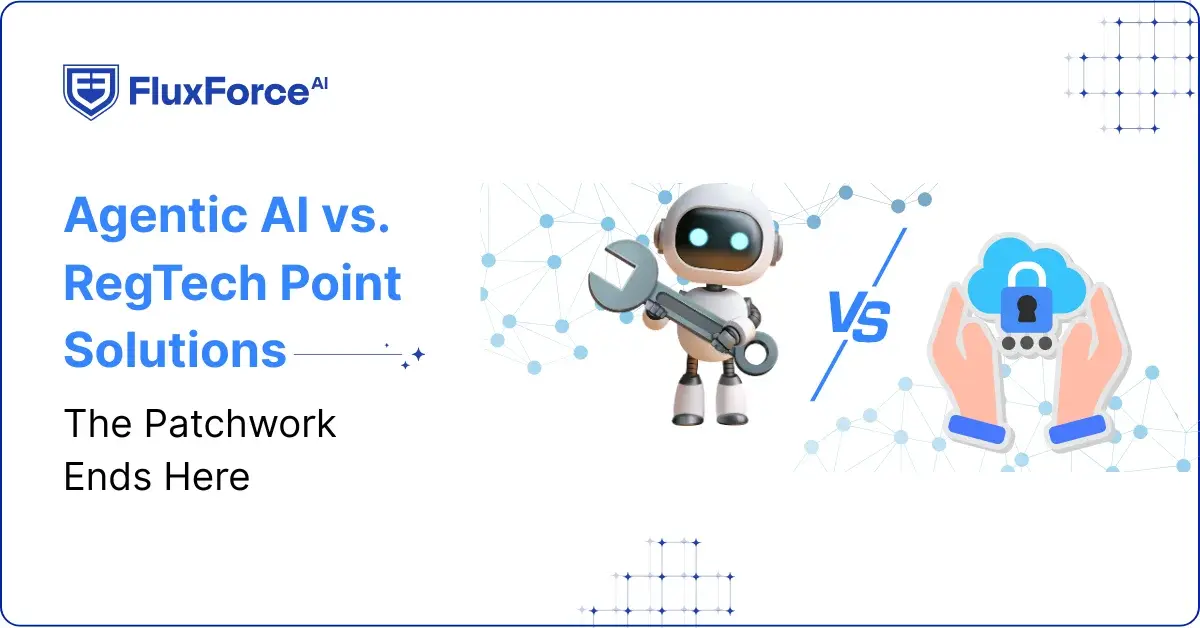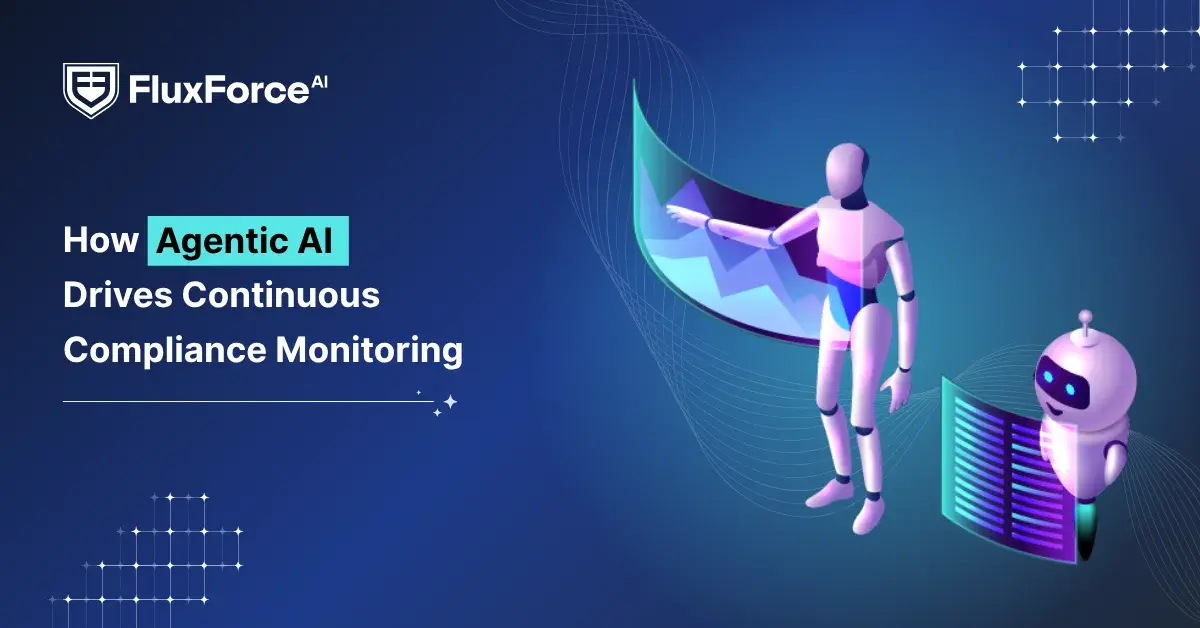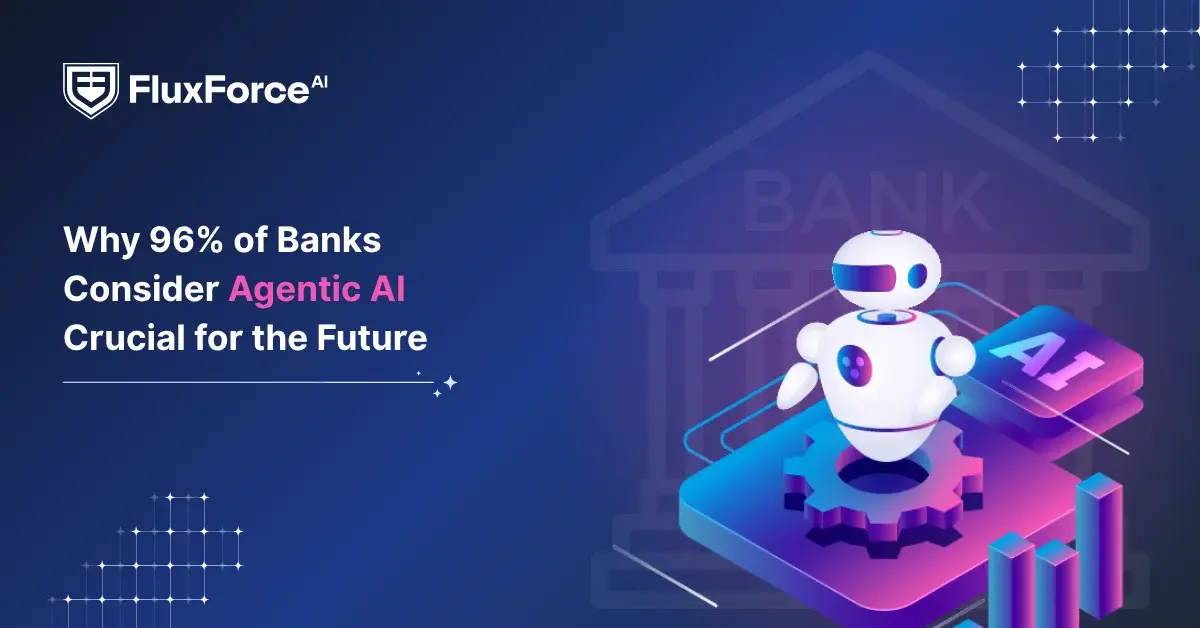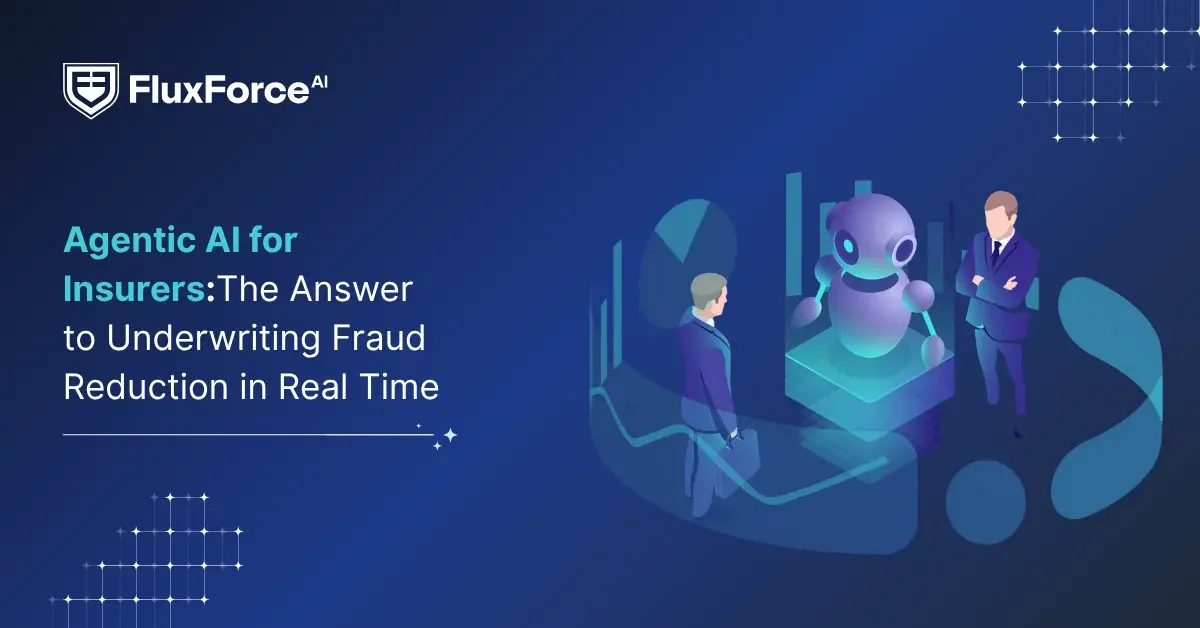Listen To Our Podcast🎧

Introduction
The use of Artificial Intelligence (AI) in financial operations has evolved from isolated, siloed tools to integrated, end-to-end systems. In financial compliance management, traditional RegTech point solutions are being widely replaced by end-to-end compliance automation powered with Agentic AI.
With global compliance-related costs approaching $150 billion annually, managing regulatory requirements through fragmented tools has become inefficient. In comparison, Agentic AI solutions are addressing these challenges by autonomously handling compliance within a centralized workspace.
The solution to compliance with evolving regulations in digital environments lies in next-gen RegTech solutions, which this blog will explore by comparing traditional point tools with Agentic AI-driven end-to-end platforms.
RegTech Point Solutions: The Patchwork Problem

Banking compliance processes managed through separate tools work in isolation, creating complexity in monitoring, reporting, and verification. Instead of addressing risks, significant resources were drained while reconciling data manually between disconnected systems.
Over time, these inefficiencies have forced banks to spend heavily on both staffing and remedial technologies. The impact is evident: Wells Fargo incurred $3.5 billion in compliance-related costs, while Citigroup faced fines of $136 million.
The limitations of RegTech point solutions create challenges that directly slow compliance efficiency and increase financial risk. These include:
- Delayed decision-making– Compliance officers must check multiple disconnected dashboards before approving critical financial actions.
- Data inconsistency– Fragmented systems lead to mismatched reports, undermining audit readiness and trust in regulatory submissions.
- Escalating compliance costs– Maintaining separate licenses, integrations, and vendor contracts inflates operational spending.
- Limited scalability– Point solutions struggle to adapt when new regulatory frameworks or digital assets are introduced.
- Siloed visibility– Risks identified in one department often fail to reach another in time, creating blind spots for enterprise-wide compliance.
How Agentic AI Transforms Compliance

Leveraging Agentic AI in compliance orchestrates regulatory requirements and ensures automated security compliance for banks. From checking against AML to generating automated reports, AI-driven regulatory compliance frameworks eliminate the patchwork compliance challenges in banking.
Key Transformations through Agentic AI in compliance include:
1. Breaking silos in compliance
Agentic AI connects all compliance functions across departments, eliminating fragmented workflows. It ensures that monitoring, reporting, and verification occur in a unified system, removing inefficiencies caused by disconnected tools.
2. End-to-end automated compliance workflows
From transaction monitoring to regulatory reporting, agentic models handle regulatory workflows automatically, reducing manual intervention, accelerating decision-making, and ensuring consistent adherence to regulations.
3. Reactive to Proactive risk detection
AI identifies anomalies and compliance breaches as they emerge, prioritizing alerts by risk severity. This minimizes regulatory exposure, reduces decision latency, and allows compliance teams to focus on strategic oversight rather than manual triage.
4. Reduced operational costs
Consolidating multiple fragmented systems into a centralized AI framework lowers licensing, integration, and staffing overhead. Resources are redirected from repetitive tasks to high-value compliance strategy, improving both efficiency and audit reliability.
5. Unified visibility across departments
Agentic AI in the financial industry provides a unified dashboard for enterprise-wide compliance. Risks detected in any department are visible organization-wide, enabling faster mitigation, coordinated responses, and stronger governance across all regulatory requirements.
Comparing Agentic AI and RegTech Tools: The Compliance Gaps

Agentic AI in financial services delivers centralized automation and real-time risk oversight; however, RegTech point solutions remain effective for targeted compliance tasks. The table below highlights the key differences between both approaches while managing compliance:

Shaping the Future of AI in Finance
Fluxforce research uncovers how banks and enterprises are adapting to fraud, compliance, and data challenges in 2025.
Best Practices for Agentic AI-Driven Compliance

Maximizing Agentic AI in compliance requires clear governance, proper integration with existing workflows, and continuous monitoring. Strategic implementation ensures measurable efficiency, reduced risk, and consistent adherence to evolving regulatory requirements.
1. Establish Clear Governance and Accountability
Define ownership, roles, and responsibilities for AI-driven compliance. Ensure decision-making authority and escalation paths are well-documented to maintain regulatory trust and internal accountability.
2. Integrate AI with Existing Workflows
Seamlessly connect Agentic AI with current compliance systems. Avoid disruption by mapping processes carefully, ensuring AI enhances rather than replaces critical human oversight.
3. Continuously Monitor and Validate AI Outputs
Regularly audit AI decisions and alerts to confirm accuracy. Continuous validation prevents drift, ensures compliance alignment, and maintains stakeholder confidence in automated processes.
4. Prioritize High-Risk Areas
Focus AI resources on areas with the highest regulatory exposure, such as AML, fraud detection, and cross-border transactions. Targeted deployment maximizes efficiency and impact.
5. Maintain Regulatory Adaptability
Ensure AI frameworks can quickly adapt to new rules, jurisdictions, or asset classes. Flexibility reduces operational lag and prevents compliance gaps as regulations evolve globally.
Onboard Customers in Seconds

Conclusion
AI-powered digital transformation in RegTech is optimizing the compliance workflows for financial institutions. According to Deloitte’s 2024 survey, 78% of organizations integrating AI into compliance workflows reported significant reductions in errors and processing time.
Shifting from fragmented point solutions to centralized, Agentic AI-driven frameworks addresses all the inefficiencies, delays, and operational blind spots that have long hindered financial organizations.
With the integration of end-to-end compliance automation, banks can improve risk oversight, reduce costs, and maintain audit-ready reporting. For financial organizations, the shift toward unified AI solutions is key for staying future-ready against evolving compliance.





Share this article